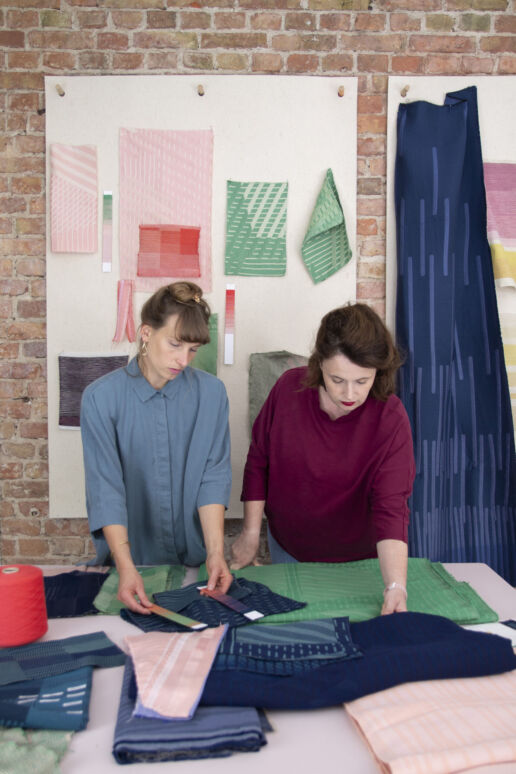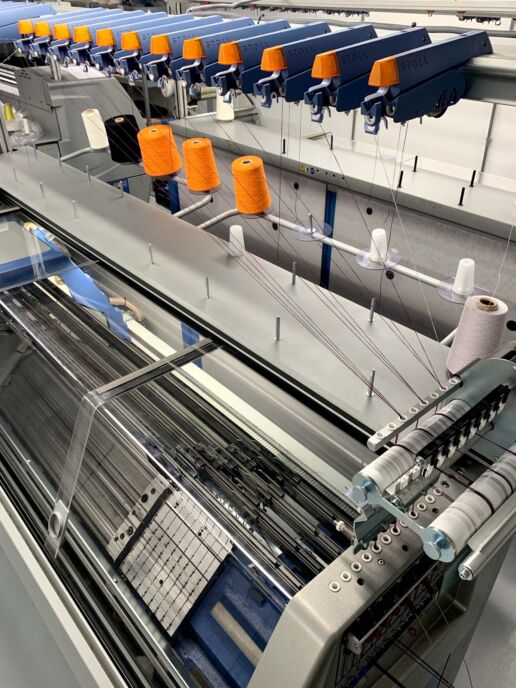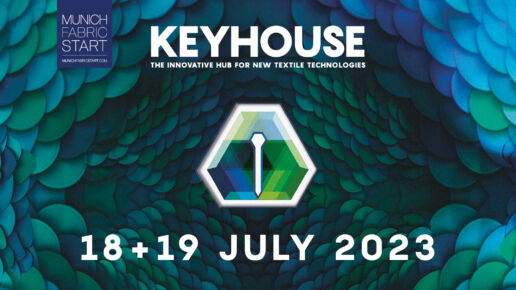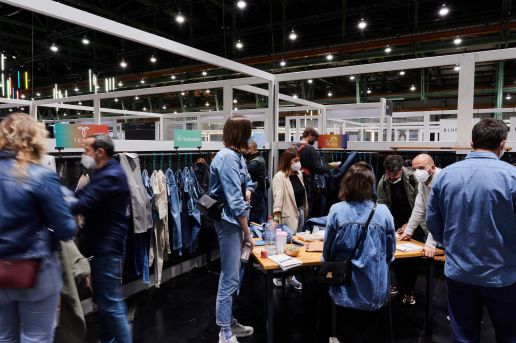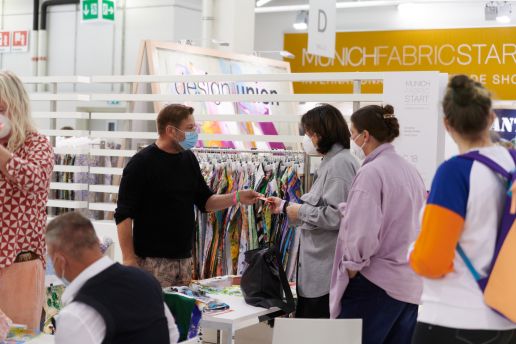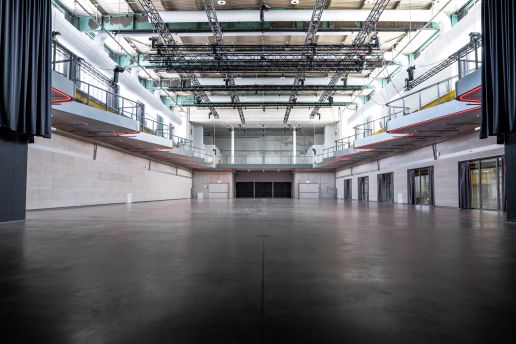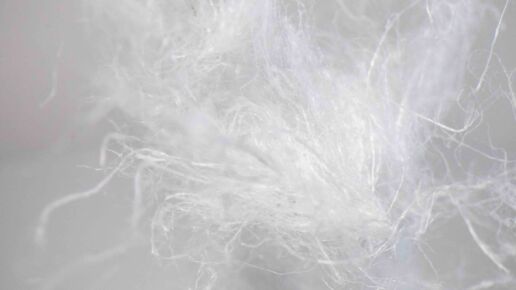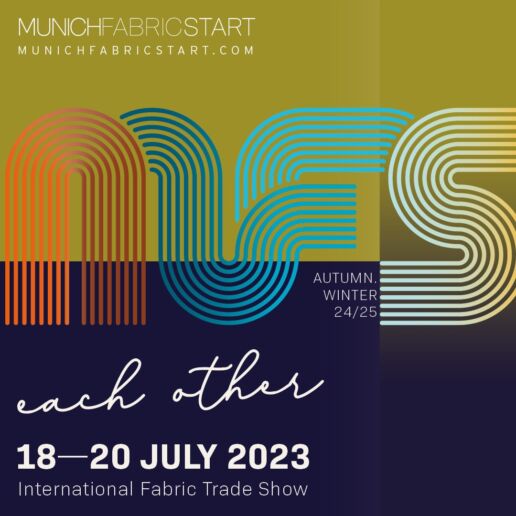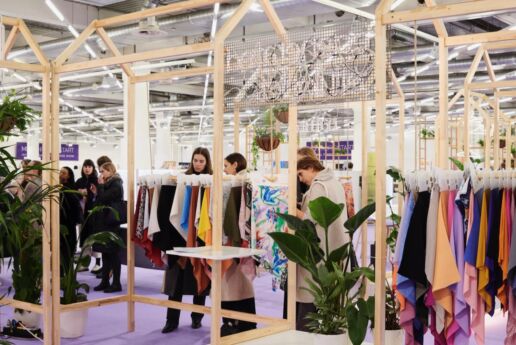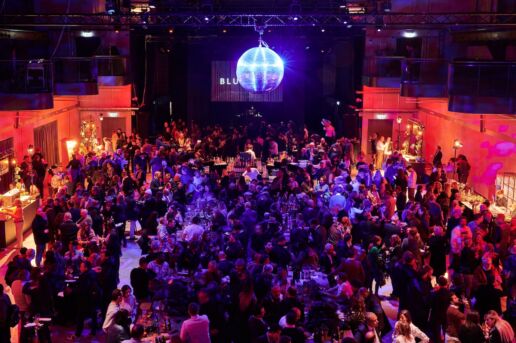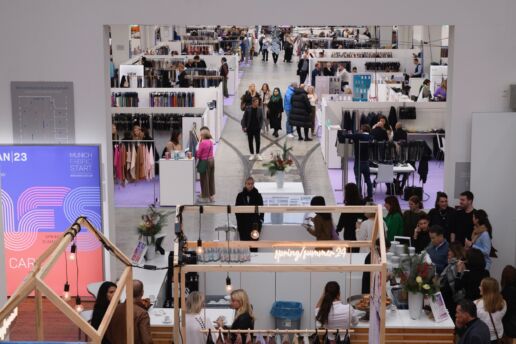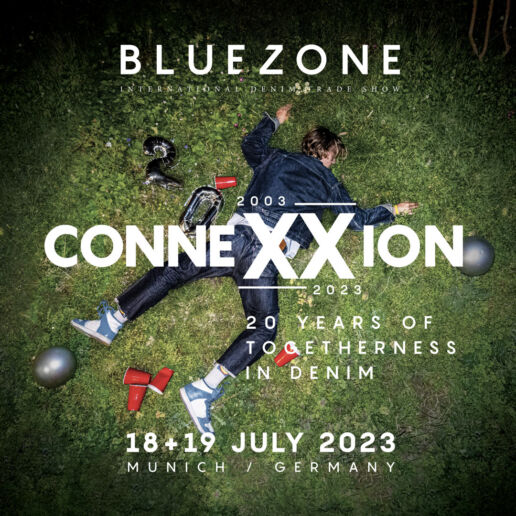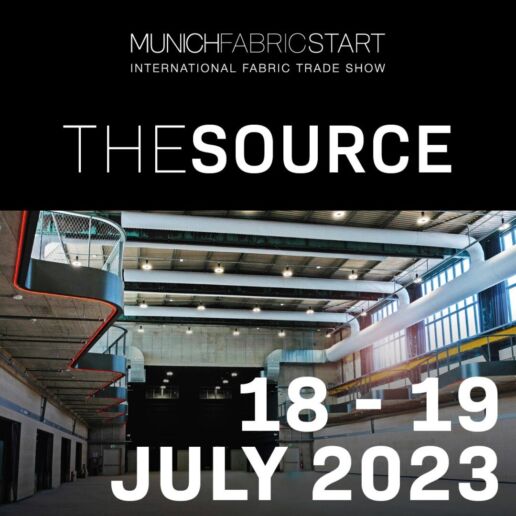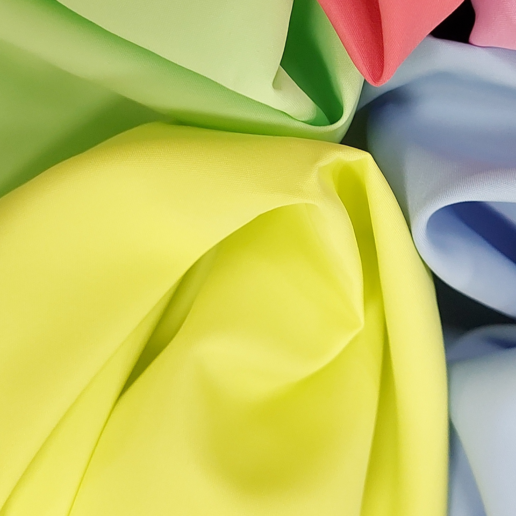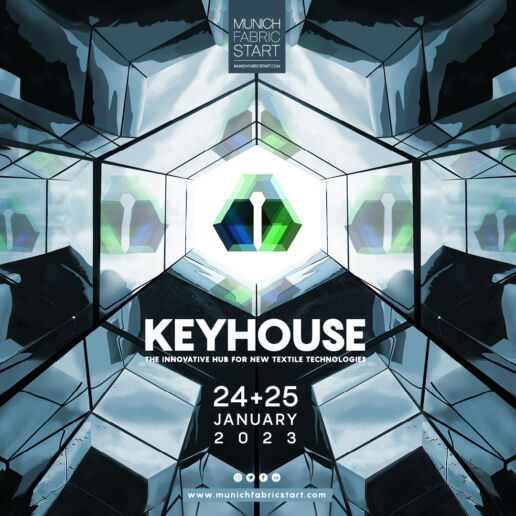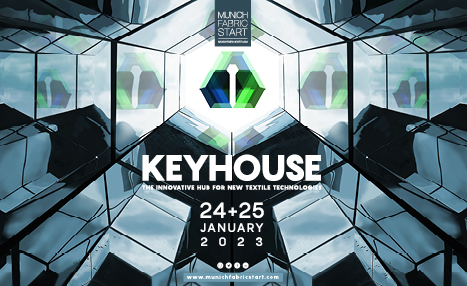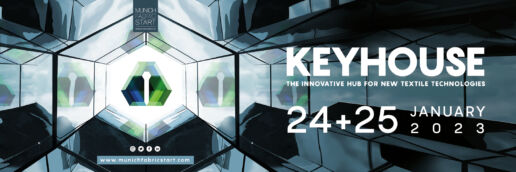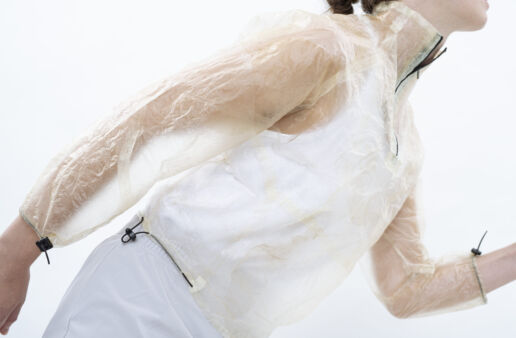Keyhouse
Drawn by the sun - Sustainable Innovations
Textiles as witnesses of time: SLOW PATTERNS is a collection by the Berlin studio Meyers & Fügmann that changes over time due to the influence of sunlight. This works by using an unconventional technique that combines the natural and the artificial. In concrete terms, this means that European is woven and dyed in Europe by hand, with the side effect of preserving traditional skills of the European textile industry. The collection combines wool with synthetic yarns. When the textiles are exposed to UV light, the natural dyes fade over time, while the stable synthetic colours retain their shades, changing the materials and eventually revealing delicate patterns.
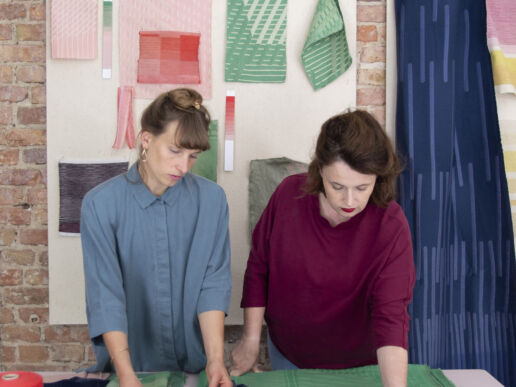
The textiles have the peotic power of tracing time. The changes in the colours make the ageing process visible and make transience a subject of discussion – spiritual as well as material. Seeing the textiles develop creates an emotional relationship, as both the owners and the objects age side by side. The textiles thus reflect and make transience visible. In doing so, they raise questions about physical obsolescence. Instead of connoting these aspects negatively, SLOW PATTERNS encourages us to value the products over their entire lifespan and to accept and celebrate their changes as well as our own.
A sign against fast fashion: the low lightfastness of natural materials is often seen as a shortcoming. Meyers & Fügmann, on the other hand, show with their project how aesthetically natural colours change and that beauty can lie in this process. SLOW PATTERNS thus becomes a plea for the dignity and vitality of natural colours.
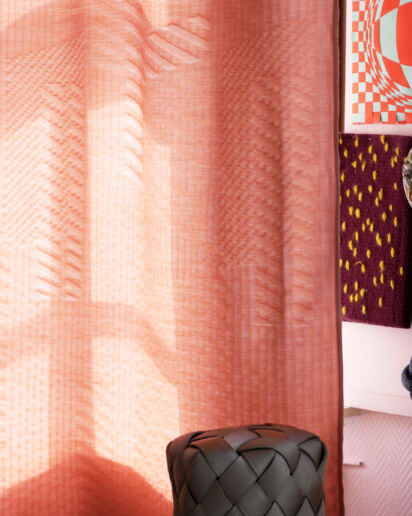
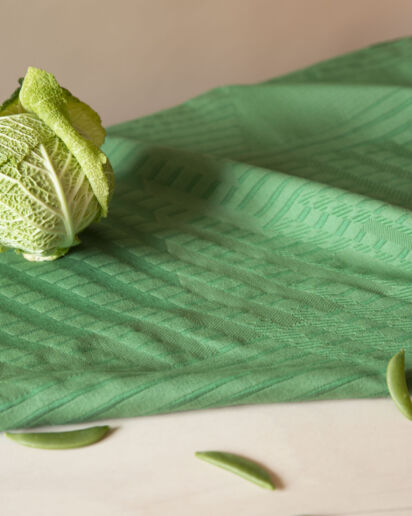
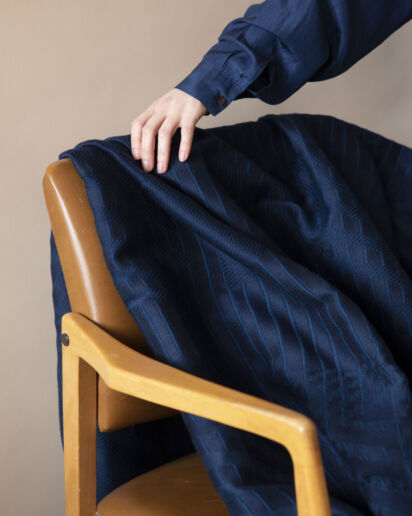
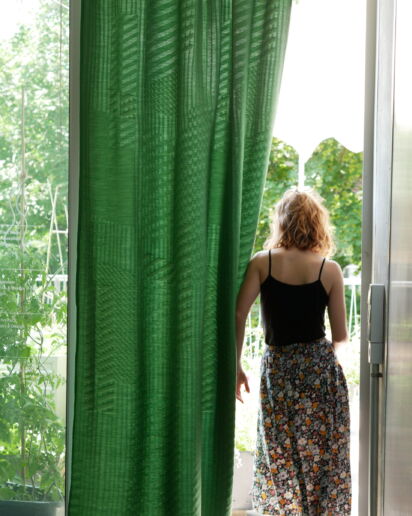
“Lightfastness is a relevant topic for future industries, as natural and recycled dyes and fibers demonstrate lower lightfastness.
Our approach is to show the liveliness of natural colours and romote them as a real alternative to synthetic dyes, opening markets for less durable colours. The aging process is designed into the product in order to foster a debate about slow consumerism and the relationship we have with our belonging.”
SARAH MEYERS AND LAURA FÜGMANN
———————————————————————–
THIS ALSO MIGHT BE INTERESTING FOR YOU
The Source Collection’s News: EAST
16. January 2025
Fashion is not only about following trends, but also about expressing your creativity and personality.
KEYHOUSE NEWS – PaperTale
15. January 2025
Whether you’re exploring product traceability, seeking to streamline compliance, or driving sustainability, PaperTale provides the tools to stay ahead in a rapidly evolving industry.
Additionals Trends Spring.Summer 26 – Part 6
15. January 2025
From timeless luxury to durable workwear solutions, each collection reflects their commitment to responsible sourcing and innovative design.
Smart Knitting - Sustainable Innovations
When the programmers of KNITWEAR LAB teamed up with 3D software specialists, a completely new idea for more sustainable, cost-efficient and design-oriented pattern development and knitwear production emerged. By combining virtual and material knitting, it is possible to reduce the massive waste during the pattern and pre-production phase in the industry and to further advance knitwear development with the help of smart technologies. Knitting on a new level: The revolutionary aspect of the method is the combination of innovative-virtual 3D technology with classic-conventional knitwear. The virtual design can be implemented exactly as you see it, while the actual knitted fabric that you perceive haptically and visually can be virtualised exactly as it was knitted.
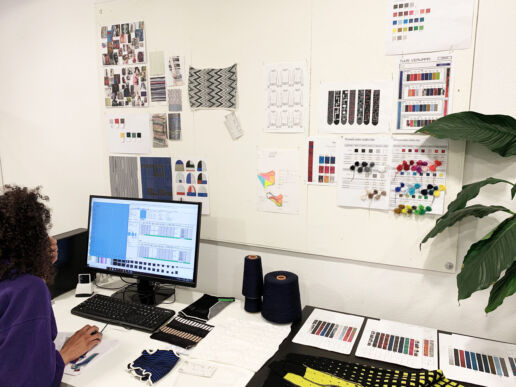
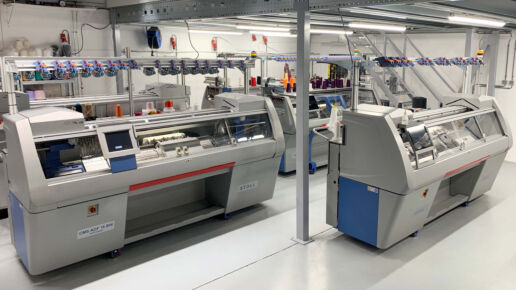
When knitting meets 3D software, there are several advantages. Designs can be improved and adjusted at an early stage in terms of design process or colouring to efficiently create virtually producible and realistic prototypes. In addition, the combination of knitwear and digital visualisation offers enormous savings potential: the waste of materials, resources and transport can thus be reduced. Furthermore, the fits for sampling and production are more accurate through Virtual Knitting, which is why, ideally, fewer samples need to be produced. Last but not least – the method significantly shortens the time from design to market and enables early commercial validation of the products, thus offering a win-win in the aspects of economic and ecological sustainabilit.
“A revolutionary method for industrial knitwear development:
A connection between virtual and material(physical) knitting, which creates a whole new world for sustainable, cost-efficient and design-driven sample development and knitwear production. KNITWEAR LAB will reduce the massive waste during the sample and pre-production stage in the industry with the use of extensive knitwear knowledge of the programmers of KNITWEAR LAB combined with the newest 3D software.”
Cherish Brouwer, Co-Founder & Designer Knitwear Lab
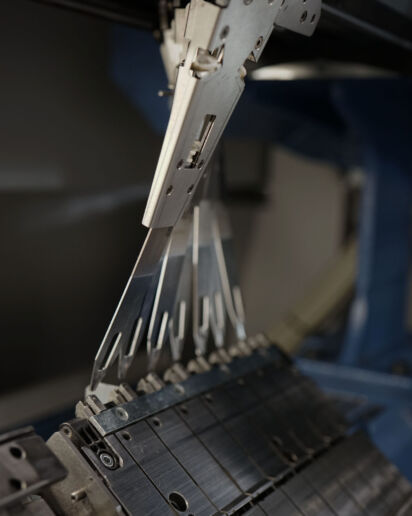
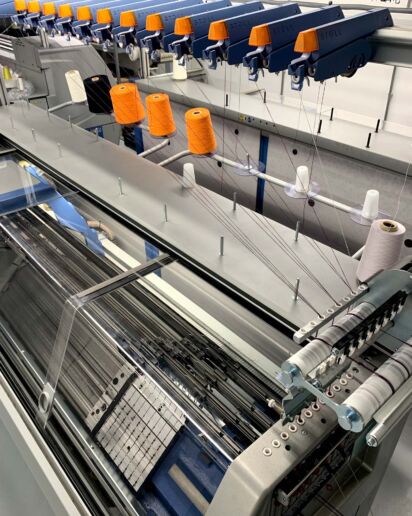
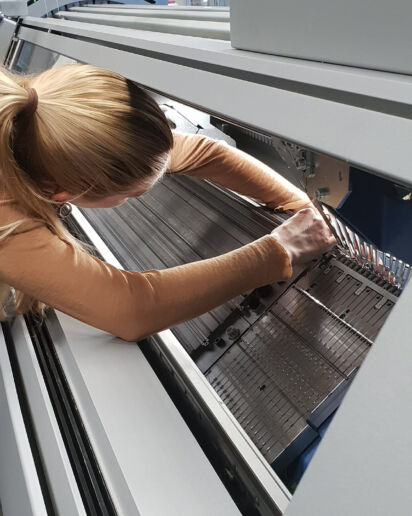
———————————————————————–
THIS ALSO MIGHT BE INTERESTING FOR YOU:
The Source Collection’s News: EAST
16. January 2025
Fashion is not only about following trends, but also about expressing your creativity and personality.
KEYHOUSE NEWS – PaperTale
15. January 2025
Whether you’re exploring product traceability, seeking to streamline compliance, or driving sustainability, PaperTale provides the tools to stay ahead in a rapidly evolving industry.
Additionals Trends Spring.Summer 26 – Part 6
15. January 2025
From timeless luxury to durable workwear solutions, each collection reflects their commitment to responsible sourcing and innovative design.
The clothing of the future - Sustainable Innovations
Every year, more than 120 million tons of textile fibers are processed worldwide – more than a third of them are petroleum-based synthetic fibers, i.e. resource- and emission-intensive, causing waste and polluting the environment. An alternative is needed. But: Where do the fibers for the clothes of the future come from – are textiles that grow on trees or shoes that come from the sea a pure utopia?
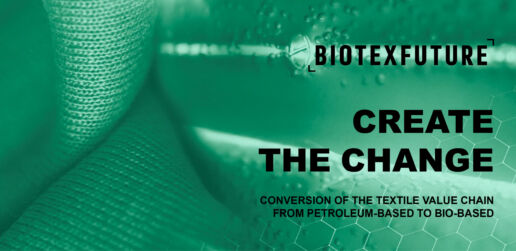
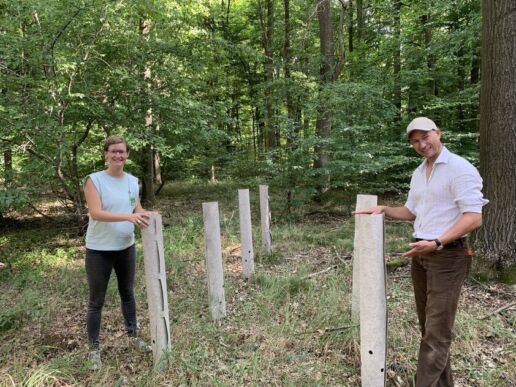
As part of the BIOTEXFUTURE Germany innovation space, leading research teams from the textile sector and industry are driving forward the development of bio-based textiles. Their aim is to accelerate the structural change towards a bioeconomy in this sector. On top of that, the ambition is also to find alternatives and solutions for some of the most important challenges currently facing the textile industry – from impregnation and dyes to elastane alternatives as well as textile recycling and microplastic filling in sports fields. On the research side, one of the world’s leading Institutes for Textile Technology at RWTH Aachen University (ITA) is responsible together with the Chair of Technology and Organisational Sociology (STO). For the industry, this part is taken over by the global company adidas AG.
Bye bye, plastic! The long-term goal is to be able to replace virgin polyester as a raw material. In concrete terms, this means that BIOTEXFUTURE is working in ten different projects to convert the individual steps along the textile value chain from petroleum-based to bio-based in the future plus to make the basic research carried out for this purpose accessible to the broad masses as quickly as possible. From algae to artificial turf to fungi: the idea behind the project ALGAETEX, for example, is to use biopolymers obtained from algae for use in textiles. BioTurf is about the development of an artificial turf structure made of bio-polyethylene that is at least as efficient as the petroleum-based materials used so far while being recyclable and without microplastic filling at the same time; the Fungal Fibers project is about the production of bio-based textile fibers from a promising fungusbased production process for the sports and medical sectors.
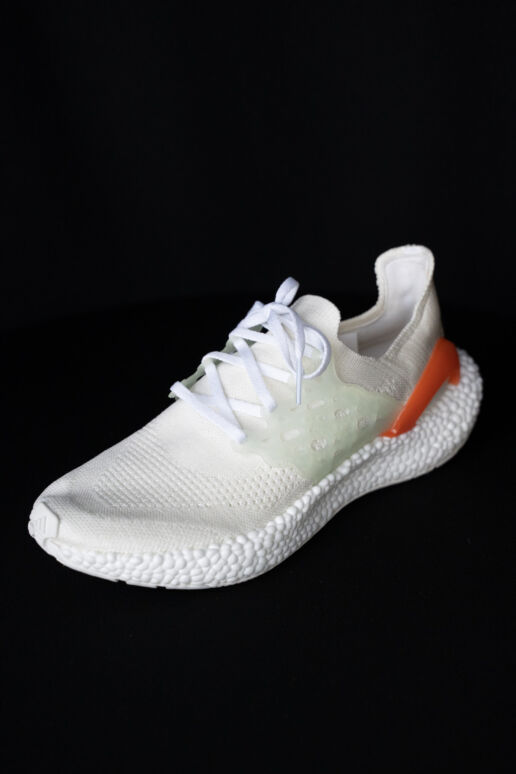
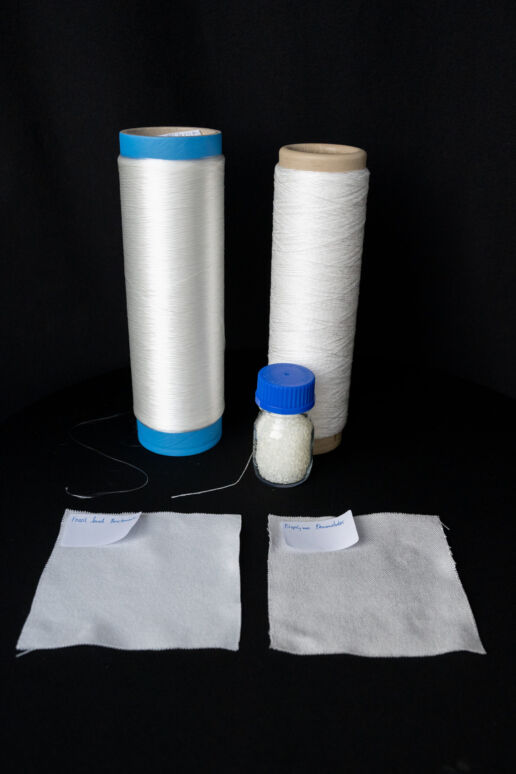
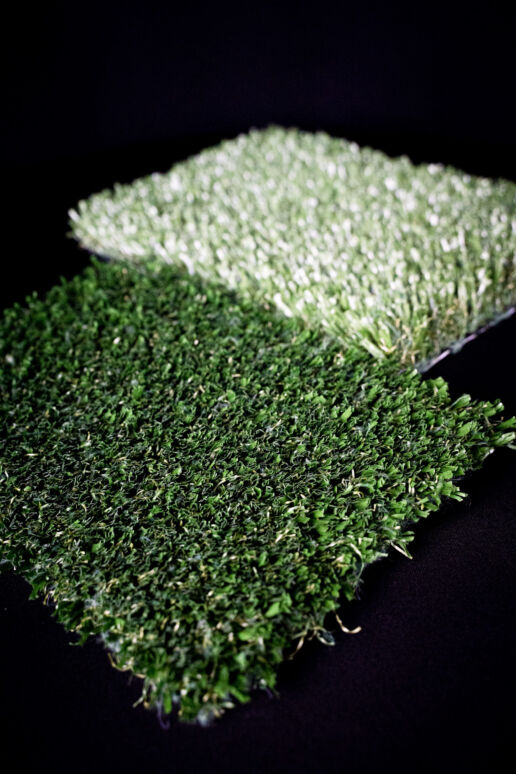
“The textile industry is not yet sustainable and burdened with massive environmental problems. Natural raw materials and ew textile technologies are a great opportunity for the future to meet the numerous challenges of the textile industry. This concerns the replacement of petroleum for polyester roduction by biological materials such as algae or fungi as well as bio-based coatings, dyes or completely new manufacturing processes. However, the major challenges of the textile sector can only be solved in close cooperation between research and industry. This is why we are committed to the BIOTEXFUTURE innovation space and would like to attract numerous new supporters in the coming years.”
Nicole Espey, Project Manager BIOTEXFUTURE
———————————————————————–
THIS MIGHT ALSO BE INTERESTING FOR YOU:
The Source Collection’s News: EAST
16. January 2025
Fashion is not only about following trends, but also about expressing your creativity and personality.
KEYHOUSE NEWS – PaperTale
15. January 2025
Whether you’re exploring product traceability, seeking to streamline compliance, or driving sustainability, PaperTale provides the tools to stay ahead in a rapidly evolving industry.
Additionals Trends Spring.Summer 26 – Part 6
15. January 2025
From timeless luxury to durable workwear solutions, each collection reflects their commitment to responsible sourcing and innovative design.
High-tech connection meets low-tech reconnection
Reflecting on the past and looking towards the future – what lies ahead in the sustainable fashion and innovative design industry?
There are two significant factors driving the evolution of the industry at present. Let’s begin with the first topic, which I refer to as the ‘process runway’. On one hand, the term ‘runway’ refers to the well-known fashion runway or catwalk. On the other hand, we can observe the growth of numerous companies and designers with a sustainable focus, who are maturing and becoming more professional, preparing themselves to connect and deliver. From this perspective, it becomes clear that companies and designers understand the need to continuously improve every step of the supply chain, striving for constant enhancement – what I call the process runway.
Could you elaborate on how these labels are improving and changing their production practices?
Certainly. Let’s delve into the example of Knitwear Lab, one of the exhibitors. They demonstrate how one client’s interactions have led to improved production and enhanced quality in several ways. In the past, their manufacturing process began with a rough sketch or digitally drawn idea. Subsequently, one single idea was prototyped multiple times, thus resulting in numerous samples, requiring significant time and numerous adjustments. This process was highly time and material-consuming. To streamline this process, Knitwear Lab embraced digitization. They created a variety of avatars with different size measurements and body types, providing a perfect digital replica for every body shape. With this approach, they can now experiment with more complex designs and experience the implications of different designs and special materials across all sizes, from XXS to XXL without producing supervacaneous samples, thus waste. This is crucial since the details of a finished garment can appear differently on various body sizes. Hence, they first create a digitally perfect fit and high-quality product. Once flawless digitally, it is then manufactured in reality. The benefits are numerous: customization, time and material savings, and cost efficiency – all essential sustainable considerations. Additionally, they can incorporate quality aspects. Cause after all efficient work processes and resource conservation remain significant challenges within the industry.
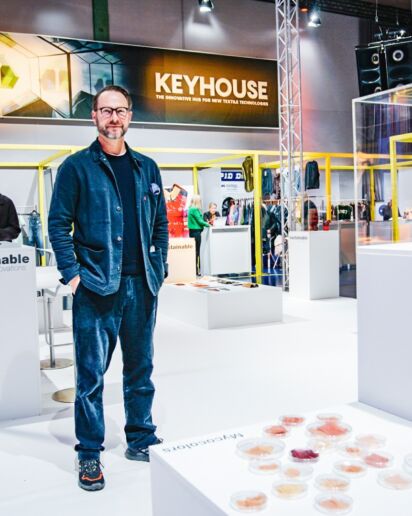
Simon Angel
So, they transitioned from specialized skills to a broader scope?
Exactly. The progression follows this trajectory: initially, we have design studios focusing on their core strengths, on what they excel at. Simultaneously, they are eager to explore avenues for improving the customer journey, sustainability aspects, sourcing or design. It entails broadening their scope of responsibilities and possibilities. Within this transition lies immense potential, but it also presents several challenges. This is the nature of pursuing a goal – people need to collaborate, assume responsibility, and expand their horizons to harness the full potential and become more sustainable and efficient.
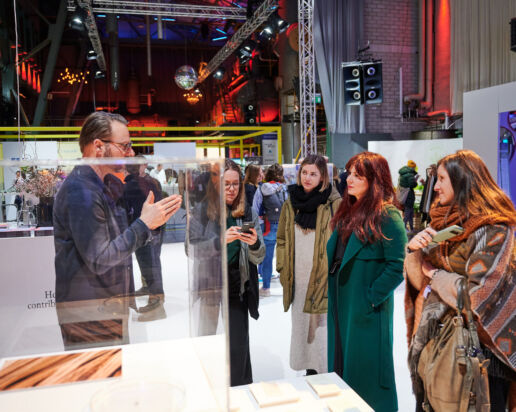
You mentioned another direction at the beginning. Could you elaborate on that?
The other topic revolves around reconnecting with craftsmanship. There is a growing focus on our human nature, on experiencing materials and products through touch, smell, taste… We are redirecting our attention towards engaging our senses. This year, we have exciting projects that facilitate this connection, inspiring people to participate in the knowledge and production processes. To be honest, this craving for tangibility and the opportunity to get hands dirty or experience materials is not limited to the production and design chain alone; it is also a fundamental human need. In the years to come, I am confident that there will be a significant resurgence in reconnecting and rediscovering the purity and authenticity of things.
Are there any synergies, or do these topics merely coexist?
On one hand we have high tech connection using digital advices for improvement and more sustainability, on the other hand low tech reconnection refocusing on craftmanship and human aspects with feeling of the senses. What they do have in common is the very important fact, that without collaboration, nothing would be the same. Studio Sarmite collaborates with Roua Atelier, Crafts Council works with Enschede Textielstad, Meyers & Fügmann cooperate with other designers. If we realize what we and others are doing, we can connect with collaboration and create something even bigger. That is what we experience ourselves at MUNICH FABRIC START: we collaborate a lot as well, for example with BiotexFuture, Berlin Design Farm and Crafts Council. We try to be a partner in acknowledging, introducing and togetherness with other partners to create something bigger in joint forces.
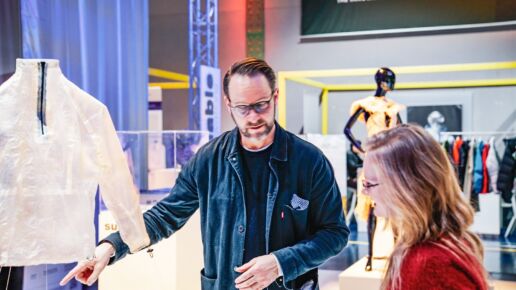
GET INFORMED & INSPIRED AT THE MUNICH FABRIC START
IN THE SUSTAINABLE INNOVATIONS AREA AT KEYHOUSE – H5!
Discover more industry-changing innovations at our upcoming trade shows:
The Textile Industry: What to Expect in the Next Five Years
The Textile Industry: What to Expect in the Next Five Years
Guest post by Muchaneta ten Napel, Founder and CEO, Shape Innovate
The textile industry has undergone remarkable changes, shifting from the use of traditional handlooms to state-of-the-art factories that produce enormous amounts of textiles and clothing. With the quickening pace of technological advancements, shifting consumer preferences, and evolving global trends, the landscape of the textile industry is on the brink of even more significant transformations in the upcoming five years.
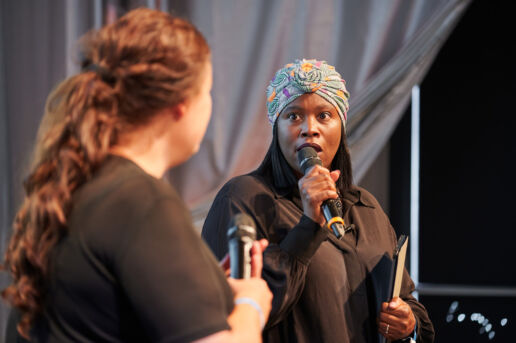
Sustainability, No Longer a Buzzword
Sustainability has evolved from a catchphrase to a prerequisite in the textile sector. The rising consciousness of consumers regarding their environmental impact has compelled textile producers to adopt eco-friendly practices. As a result, the forthcoming half-decade is expected to herald an era where sustainability is the rule, not the exception.
The focus will be reducing hazardous chemicals, water, and energy in textile production. The industry will place greater emphasis on circular production methods and using recycled materials. Brands will strive to decrease their carbon footprint while maintaining the quality and style of their products, ensuring their entire supply chain adheres to sustainability standards.
Technology, A Key Driver
Technological innovation, a key industry driver, will further shape production processes over the next five years. Automation, artificial intelligence (AI), and the Internet of Things (IoT) will redefine production efficiency. Automation will enhance efficiency, reduce manual labour, and minimise production errors, leading to quicker turnarounds, amplified production capacity, and cost reduction.
AI will enable trend prediction, production optimisation, and quality control enhancement. Textile producers will leverage AI tools to analyse data and make informed sourcing, manufacturing, and distribution decisions. By connecting devices and systems, IoT will provide the following:
- Real-time control and monitoring of production processes.
- Thus improving quality control.
- Reducing waste.
- Boosting productivity.
Demand for luxury and premium textile products will rise over the next five years. An increase in consumer financial stability and an expanding middle class in emerging markets like China and India will drive this trend. In addition, the shift in consumer behaviour due to the COVID-19 pandemic towards prioritising comfort, quality, and durability over fast fashion will likely persist.
The Rise of Local Production
The pandemic also highlighted global supply chains’ vulnerability, causing production and delivery disruptions. The coming years will see a rise in local production as brands seek to reduce dependency on foreign suppliers. This shift towards local production will bring quicker turnarounds, lower transportation costs, reduced carbon footprint, and greater control over the supply chain. It will also stimulate local economies by creating job opportunities and nurturing local textile industries.
However, local production comes with challenges, including potentially higher costs than overseas production and the need for a skilled workforce. Nevertheless, the brands that successfully adapt to these shifts and meet evolving consumer needs will flourish in the upcoming years. In addition, the textile industry’s transformation presents an opportunity to address long-standing issues such as environmental sustainability, ethical production, and supply chain transparency, promising an exciting future.
In conclusion, the textile industry is poised for a significant evolution in the next five years, propelled by consumer behaviour, global trends, and technological advancements.
The textile industry is poised for a significant transformation in the next five years. Its evolution presents an opportunity to address long-standing challenges such as environmental sustainability, ethical production, and supply chain transparency.
All in all, it is an exciting time for the textile industry, and the next five years will undoubtedly shape its future.
Are you interested in more in-depth facts and figures on the new textile economy?
Visit the Shape Innovate Lounge in H5 | 04 or attend the mini-lectures in the Keyhouse.
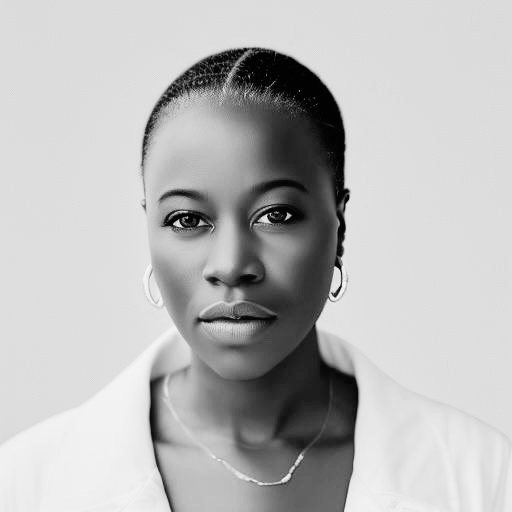
About the author
Founding editor-in-chief of Shape Innovate, Muchaneta has worked in the fashion industry for over 14 years. She is currently one of the leading influencers speaking and writing about the merger of fashion with technology and wearable technology.
Muchaneta ten Napel | m@shapeinnovate.com
THIS ALSO MIGHT BE INTERESTING FOR YOU
Additionals Trends Spring.Summer 26 – Part 1
5. January 2025
The beauty of the Opposite Collection lies in its ability to tell a story.
KEYHOUSE NEWS – WKS
5. January 2025
WKS Sustainable Textile Solution has been the unique service provider along the entire textile supply chain for over 60 years.
TEXroad: Putting the data in circular textiles
4. January 2025
The Data Hub tackles challenges in the post-consumer value chain such as a lack of transparency in textile flows, inconsistent data shared between partners, and inefficient reporting to the public sector.
Venus In Fury of Sustainable Innovation
4. January 2025
Marking a seismic shift from traditional textile creation, Venus In Fury’s approach starts not with a sketch, but with a selection of natural materials like Dutch wool and seaweed.
KEYHOUSE NEWS – FELDE FIBRES
20. December 2024
This innovative quality offers unmatched fineness, handfeel, and appearance, unlocking new application possibilities and reviving the long-overlooked hemp plant.
LOOPER Textile Co. – A second life for unwanted garments
17. December 2024
Looper Textile Co. is a trusted partner in preparing garments for the next phase of their lifecycle. The bold ambition and strong heritage of this young company lies the understanding...
SPRING.SUMMER 26 FABRIC HIGHLIGHTS & MATERIAL NOVELTIES – PART II
16. December 2024
Beautiful and contemporary prints add fresh and vibrant touches to any garment. Wild silks are offered alongside tulles with low or zero formaldehyde.
New Fabric Collection of BLOOMATI by Carvema
15. December 2024
Innovation is at the heart of our collection. We have explored new textile technologies that bring futuristic properties to fabrics.
New Fabric Collection by Paulo de Oliveira
13. December 2024
Paulo de Oliveira is a reference in sustainable production, focusing on sustainable raw materials produced in Europe by ecological processes.
SPRING.SUMMER 26 FABRIC HIGHLIGHTS & MATERIAL NOVELTIES – PART I
12. December 2024
Fashionable woven and knitted fabrics made of wool, cotton, silk, blends and functional fibres are presented by our international suppliers..
Discover the latest trends from KEYHOUSE 2023
In the atmospheric industrial charm of KEYHOUSE, Hall 5, progressive suppliers and global players from cross-industry sectors will show their latest new developments and innovations. On more than 1,000 square metres you will find trend-setting smart textiles, future fabrics and new technologies – be it in terms of sustainability, circular economy, digitalisation, traceability, technology or finishing. Staged as an interactive think tank, forward-looking show cases will be in the spotlight alongside sustainable innovations.
The KEYHOUSE is also home to the main lecture forum of MUNICH FABRIC START with exclusive keynotes, panel discussions, trend presentations, Q&A sessions and expert talks from international industry insiders. These are some of the innovative brands that presented their new products during the last KEYHOUSE Edition in July 2023.

ALGA – LIFE
Algaeing™ is all about proactively addressing apparel and textile supply chain practices, combating climate change, and capitalizing on the growing market demand for sustainable and healthy products. With an innovation that converts algae into bio-fiber and eco-friendly dye, Algaeing™ is redesigning the world of fashion and other industries for future generations. Let’s detoxify the fashion industry with Algaeing™ textile solutions!

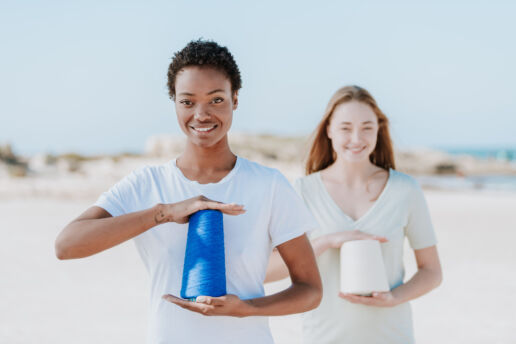

CLO Virtual Fashion
CLO Virtual Fashion, established in 2009, is a multinational technology company revolutionizing the garment industry. Utilizing their cutting-edge 3D Cloth Simulation Algorithm, they seamlessly integrate digital and physical garment components, leading the market. The transformative CLO Fabric Digitization Service converts physical fabrics into digital assets, enabling limitless design possibilities and fostering collaboration with suppliers. This service reduces costs and unlocks unparalleled creativity. With a comprehensive suite of interconnected products, including 3D garment design software, digital asset management, and consumer-facing services like virtual fitting, CLO Virtual Fashion offers users a consolidated and innovative way of designing.
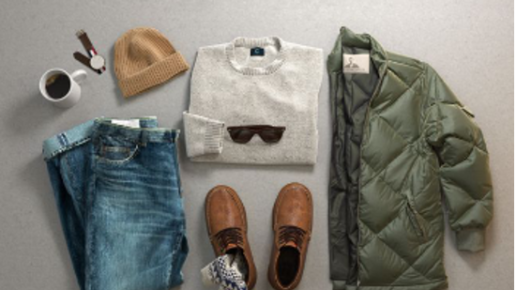
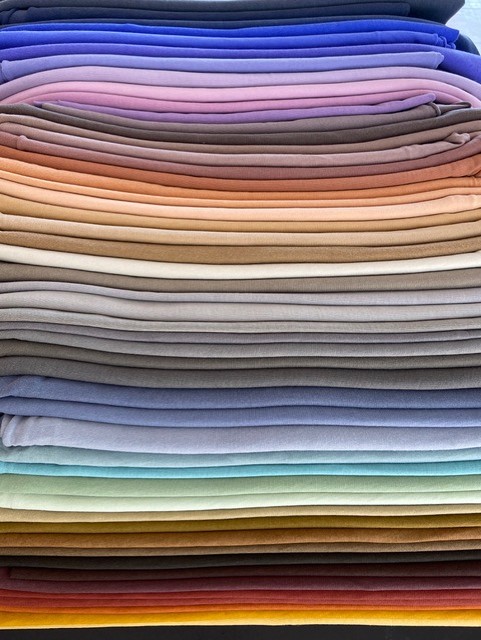
EYAND
Ecological yarn and 100% natural dying: Eyand is a registered Brand that represents the technical know-how used in the knitting and preparing of the fabrics and garment dying process using natural colors assuring the absence of chemical products. With a family tradition in textiles and more than 30 years of experience, Marti Puignou, General Manager of TIS Group and creator of the brand Eyand has invested all his efforts to offer fabrics with the maximum quality and with an ecological focus. Eyand® holds certifications such as OEKO-TEX® Standard 100, GOTS and GRS.
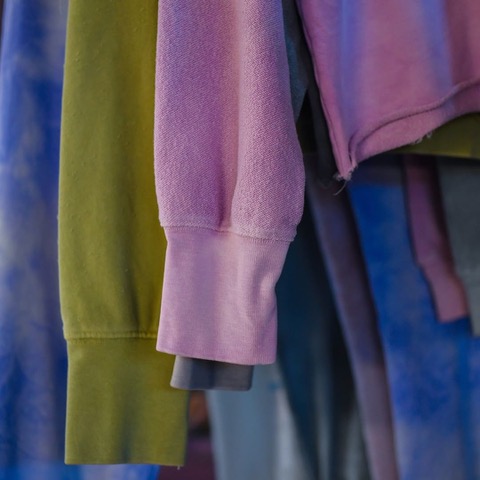
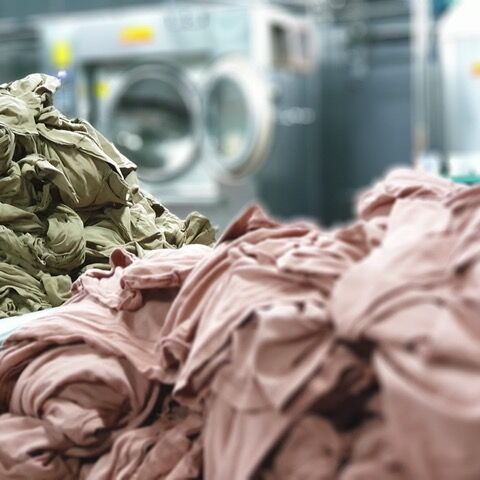
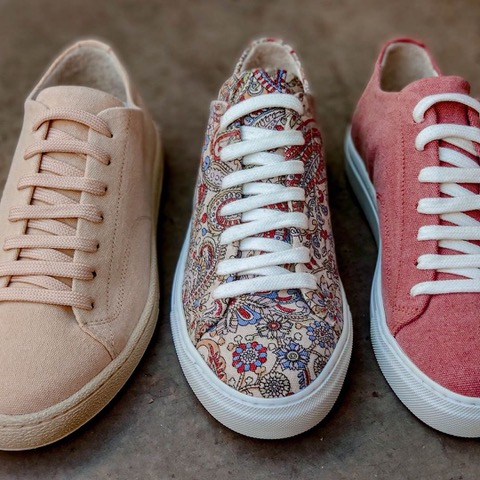
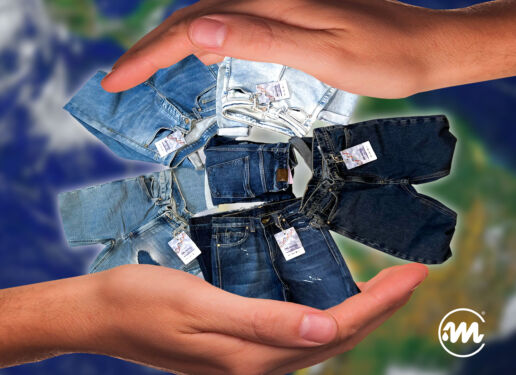
MONTEGA CHEMICAL SOLUTIONS
Montega Chemical Solutions from Italy is the leader in the production of chemicals and focuses its new research on its responsibility for a cleaner chemistry without penalize the fashion look that always inspires its new collections. Montega gives the input to continuously use the fantasy, to express the creativity without bounds realizing a sustainable art on the garment with Italian flavour.
NEW (RE)SOLUTIONS by Naveena Denim Mills
NEW (RE)SOLUTIONS is a collaborative collection exploring new solutions to design future-fit sustainable denim crafted by Naveena Denim Mills using the latest LYCRA® innovations. The collection is designed by Jac Cameron, and sustainably finished by Chantuque, the first pure sustainable laundry of Turkey. Established in Karachi, Pakistan, in 2005, Naveena Denim Mills specializes in manufacturing premium yarn and denim fabrics, constantly seeking the ultimate union of form and function through creative engineering.
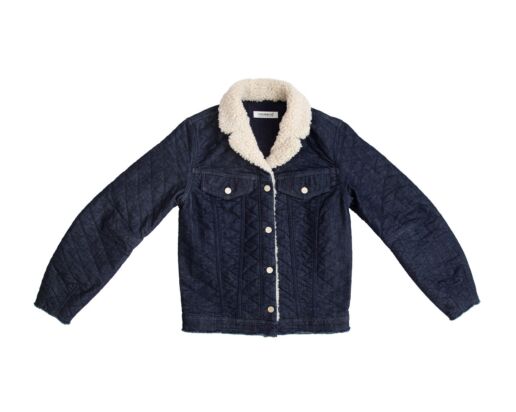
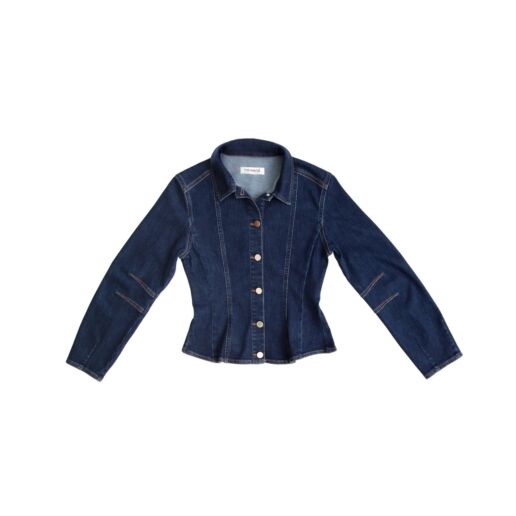
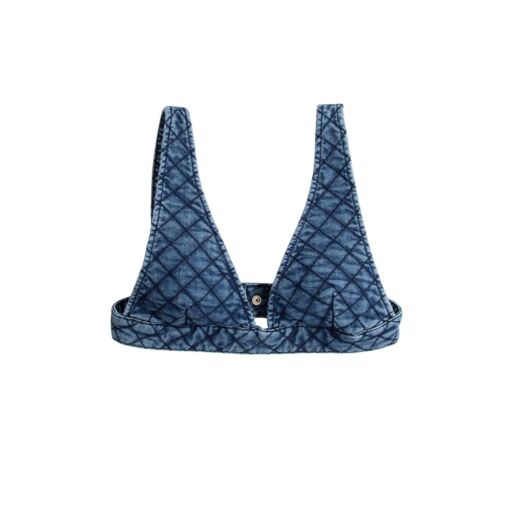
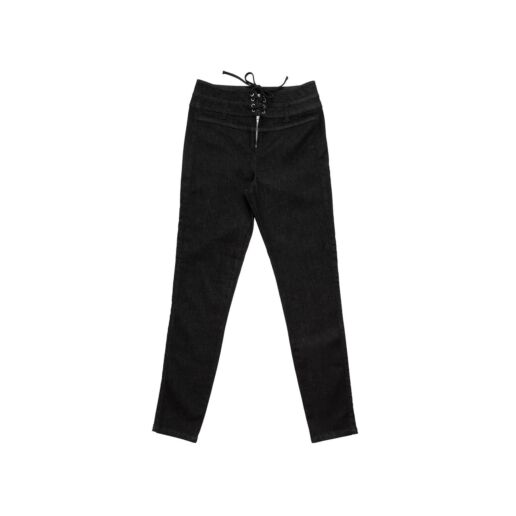
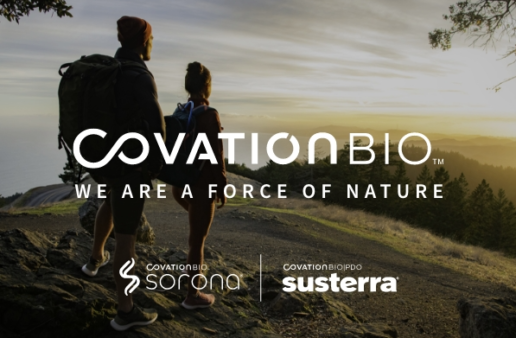
SORONA
Sorona® is a breakthrough bio-based, high-performance polymer offering unique benefits for the textile industry. It contains 37% renewable plant-based ingredients by weight and minimizes the impact on the environment without sacrificing quality and performance. Sorona® can be used in a wide range of textile applications and offers unique performance benefits, including incredible softness, long lasting stretch and recovery properties, UV and chlorine resistance, a quick dry ability, excellent resilience, color fastness, and inherent stain resistance without the need for toxical treatments. Sorona® is a USDA certified bio-based product and has received the OEKO-TEX® Standard 100 Certification and blue sign certification.

TAILORLUX
Tailorlux supports companies in realizing transparency in supply chains, circularity and product protection. IntegriTEX® is an innovative traceability system designed to ensure the authenticity, identity and blending ratios of fibers and textile products. The system is based on tracer fibers that contain inorganic luminescent pigments and can be read out by Tailorlux sensors. The patented Chopcot® Dosing Device creates the entry point for integriTEX® tracer fibers. The unit crimps and cuts filaments to staple fiber, and then doses the fiber into the material flow. Visit Tailorlux at their KEYHOUSE booth H5 | 13 to learn more about textile traceability and how it can be connected to digital solutions!
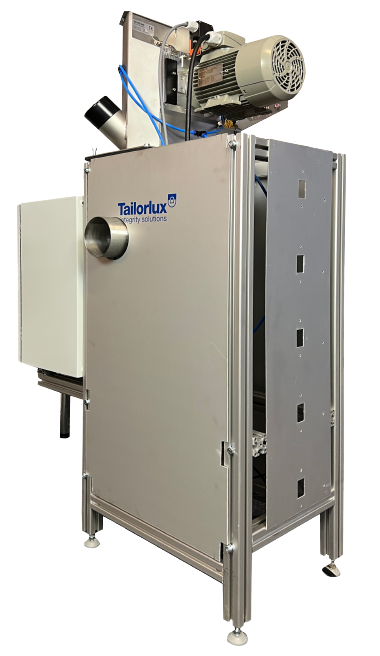
THIS MIGHT ALSO BE INTERESTING FOR YOU
Additionals Trends Spring.Summer 26 – Part 1
5. January 2025
The beauty of the Opposite Collection lies in its ability to tell a story.
KEYHOUSE NEWS – WKS
5. January 2025
WKS Sustainable Textile Solution has been the unique service provider along the entire textile supply chain for over 60 years.
TEXroad: Putting the data in circular textiles
4. January 2025
The Data Hub tackles challenges in the post-consumer value chain such as a lack of transparency in textile flows, inconsistent data shared between partners, and inefficient reporting to the public sector.
Venus In Fury of Sustainable Innovation
4. January 2025
Marking a seismic shift from traditional textile creation, Venus In Fury’s approach starts not with a sketch, but with a selection of natural materials like Dutch wool and seaweed.
KEYHOUSE NEWS – FELDE FIBRES
20. December 2024
This innovative quality offers unmatched fineness, handfeel, and appearance, unlocking new application possibilities and reviving the long-overlooked hemp plant.
LOOPER Textile Co. – A second life for unwanted garments
17. December 2024
Looper Textile Co. is a trusted partner in preparing garments for the next phase of their lifecycle. The bold ambition and strong heritage of this young company lies the understanding...
SPRING.SUMMER 26 FABRIC HIGHLIGHTS & MATERIAL NOVELTIES – PART II
16. December 2024
Beautiful and contemporary prints add fresh and vibrant touches to any garment. Wild silks are offered alongside tulles with low or zero formaldehyde.
New Fabric Collection of BLOOMATI by Carvema
15. December 2024
Innovation is at the heart of our collection. We have explored new textile technologies that bring futuristic properties to fabrics.
New Fabric Collection by Paulo de Oliveira
13. December 2024
Paulo de Oliveira is a reference in sustainable production, focusing on sustainable raw materials produced in Europe by ecological processes.
SPRING.SUMMER 26 FABRIC HIGHLIGHTS & MATERIAL NOVELTIES – PART I
12. December 2024
Fashionable woven and knitted fabrics made of wool, cotton, silk, blends and functional fibres are presented by our international suppliers..
NEW DATES VIEW and MUNICH FABRIC START
A strong start to the season in July, order decisions at short notice in September
MUNICH FABRIC START Exhibitions GmbH offers one thing above all with the positioning of its trade show formats in terms of dates and content for sourcing for Autumn.Winter 24/25: full flexibility.
In future, the July date will be used by the international fabric trade show MUNICH FABRIC START with KEYHOUSE, THE SOURCE and BLUEZONE as an impulse generator; the September date will remain an important time for follow-ups and for picking up on new and short-term market developments with reVIEW, the new concept of the VIEW PREMIUM SELECTION.
With a current booking level of almost 90% for the international fabric trade show MUNICH FABRIC START, KEYHOUSE, THE SOURCE and BLUEZONE, Munich Fabric Start Exhibitions GmbH is starting the new season for Autumn.Winter 24/25 on a strong footing. From the organisers’ point of view, the main reason for the high level of acceptance from internationally important fabric and trim exhibitors, renowned agencies, top European weavers and textile designers is the rebalancing of the July dates.
Previously, the VIEW PREMIUM SELECTION had taken place at the end of June/beginning of July with a selective choice of high-quality fabric and accessories collections. From 18 to 20 July 2023, the Munich-based trade show organiser will now successfully occupy the early date for the first time with the full power as one of Europe’s leading fabric trade shows: the international fabric trade show MUNICH FABRIC START (18 to 20 July), the innovation hub KEYHOUSE, the one-stop sourcing platform THE SOURCE and the international denim trade show BLUEZONE (18 and 19 July) will move ahead and at the same time increase their relevance in the international trade show scene.
For a large part of the visitors, the earlier date is closer to the collection rhythms and offers more time for further developments. Same goes for the BLUEZONE community and the denim business anyway – the approval for the July date could hardly be greater, which makes the organisers particularly happy on the occasion of the 20th anniversary of BLUEZONE as the first denim dedicated trade show.
Important exhibitors – including returnees – such as Ballesio, Cadica, Discovery Denim, East & Silk, Fauck, Lanificio Campore, Mapel, Naveena Denim, Pricoh’s, Sintopel, Sourcetextile, Studio 9, Taiwan Textile Federation and YKK as well as new entries like Esdigital, IBERIS Lda, Jeanius, Jersey Print Factory, Lucky Textile Group, Marjomotex, Neelams Itl, Splash by Lo, Victor Texteis or Wouters have already confirmed their participation along with many others.
“The strongest and most professional trade show for our segment clearly accommodates our development traits with its date. This date is much closer to our rhythms and, with its strong exhibitor portfolio, MFS has considerably more influence on the creation of our collections.
Especially for Bluezone – a unique, creative and inspiring space for us every time – the date is very convenient as it offers more time for washing developments and creative elaborations. With their ideas and implementations, the MFS & Bluezone team always has its finger on the pulse of time which enables us to incorporate additional inspirations into our work”
Michael Seiter, Head of Product Division Denim & Chino, HOLY FASHION GROUP
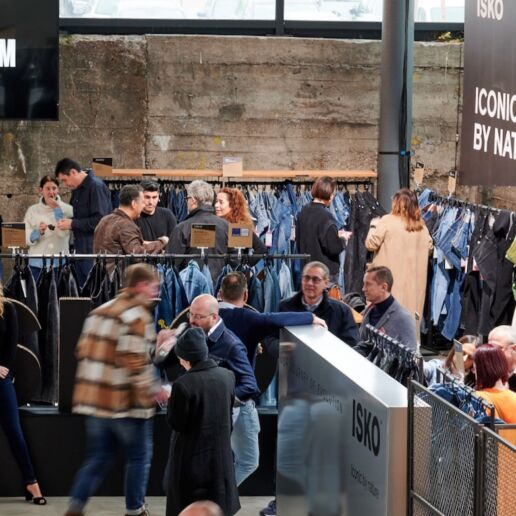
What’s new?
Due to the early date of MUNICH FABRIC START and BLUEZONE, the Munich trade show duo with KEYHOUSE and THE SOURCE formats will function even more strongly as an impulse generator and leading international event. The Munich location will also be strengthened by the relocation of the DMI Fashion Day from Düsseldorf to the Bavarian capital. In order to create maximum synergies in terms of travel times and travel costs, the first DMI FASHION DAY LIVE after the pandemic-related interruption will take place the day before the next MUNICH FABRIC START at the MOC.
The course will also be set anew in September: The date, which remains important for the industry, will in future be occupied by reVIEW – the new format of the VIEW PREMIUM SELECTION for follow-ups and highly topical, short-term trends as well as new market developments. On an area of around 2,500 square metres, the first reVIEW Autumn.Winter 24/25 will be held on 13 and 14 September 2023 on the Zenith grounds in Motorworld. With its gigantic dimensions and spectacular architecture, the listed location is one of the largest cantilevered historic steel halls in Europe.
“Trends are short-term and more fast-moving than ever. The presentation and ordering rhythms are constantly shifting. There is no one right time. With two highly relevant dates in July and September, we offer the market security and reliability on the one hand and full flexibility on the other”
Sebastian Klinder, Managing Director MUNICH FABRIC START Exhibitions GmbH
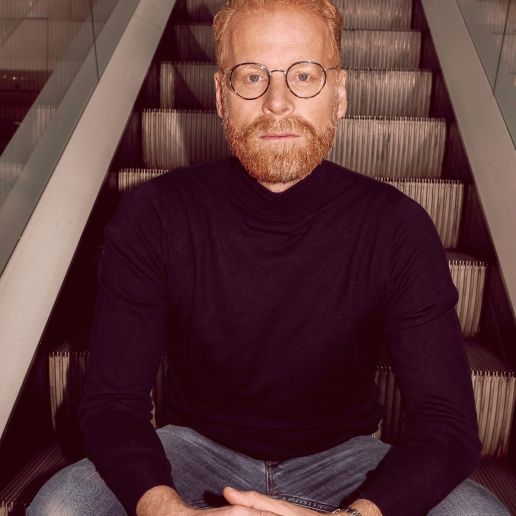
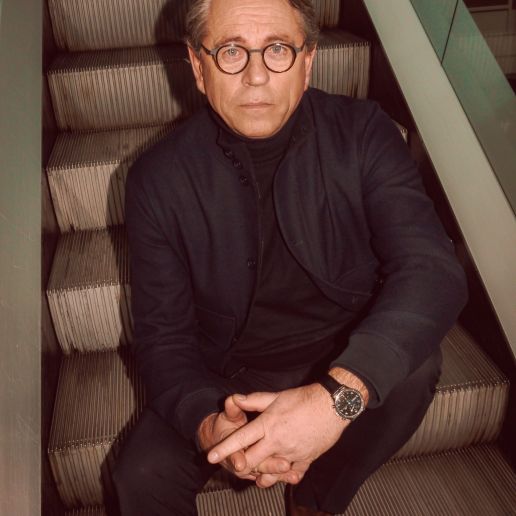
“The feedback from the textile industry as well as from international brands confirms that we have placed the right offer. Both events have great potential and complement each other perfectly. We support the market by offering the right platform at the right time to bring the relevant players together. And we do this without overlapping with other international trade show formats of the fashion business.”
Frank Junker, Creative Director der Munich Fabric Start Exhibitions GmbH
Strong encouragement from the fashion industry
The response is extremely positive, not only from exhibitors but also from international designers, product managers and buyers. In a tense market situation, MUNICH FABRIC START shows strength, forwardlookingness and reliability. MUNICH FABRIC START is the start of the new season and the most important show for early trend information.
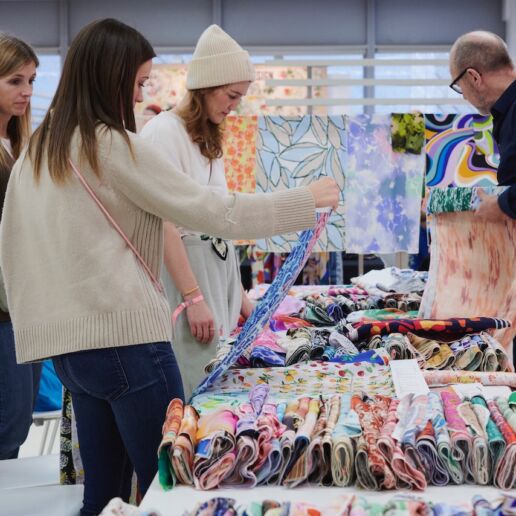
“The MUNICH FABRIC START is of great importance for our work – to be more precise, it is indispensable!
The earlier the deadline, the first input for the new collection, the more precise and pointed the result.
The reVIEW also remains relevant at the new, later date and supports our dynamic design process.”
Katerina Grigoriadis, Head of Design DayDream, MAC Mode GmbH & Co KGaA
“For our team, the new season starts with the MFS. We always take our inspiration from the colours, the forum and the exhibitors and work out our concepts for the collections accordingly. The exchange with producers and exhibitors is also indispensable and both,
MFS and View are a great platform to do so.
We discuss new themes but also previous orders. Meeting everyone at the same time and place in person is a great added value for our cooperation. In the past, we did this in Paris at PV, however this has been completely replaced by MFS.”
Tülay Önder, Head of Product Design, HALLHUBER
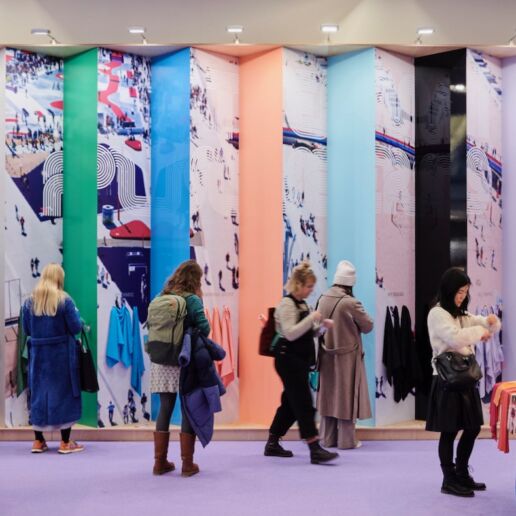
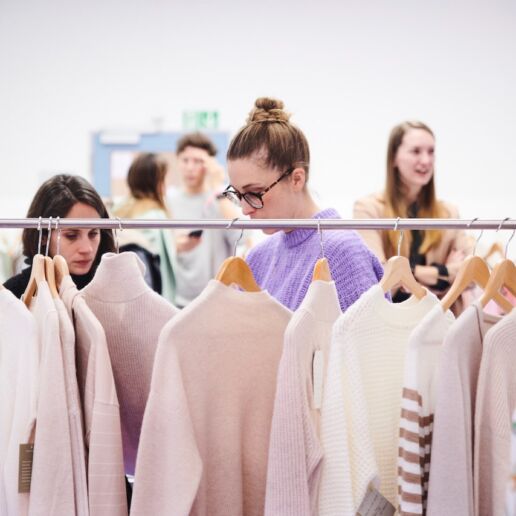
“For us, Munich Fabric Start is the most important trade show for preliminary information, for aligning the collection and for matching materials. Next to Milano Unica, it is the most important sourcing show. We welcome the earlier date of Munich Fabric Start very much. Instead of View, it will now be the most important show for us to get information early. We are excited about the process and are looking forward to it.”
Gerhard Kränzle, CEO, HILTL Hosen-Manufaktur GmbH
“The Munich Fabric Start is always an important milestone in our collection development. We are particularly interested in the trend themes and colours, which we compare with our developments to confirm or adapt them accordingly.
We are very keen to attend lectures on relevant topics such as sustainability, CAD, fair labour standards and always look forward to meeting your stars like Li Edelkoort.
The earlier date suits us very well. As knitters we already start with the new colours mid-May so the new date actually fits better into our schedule. A visit to the VIEW is a must in any development process. Since it will now take place in September, we will definitely visit this small and fine.”
Melanie Geyer, Senior Designer Knitwear, MAERZ München
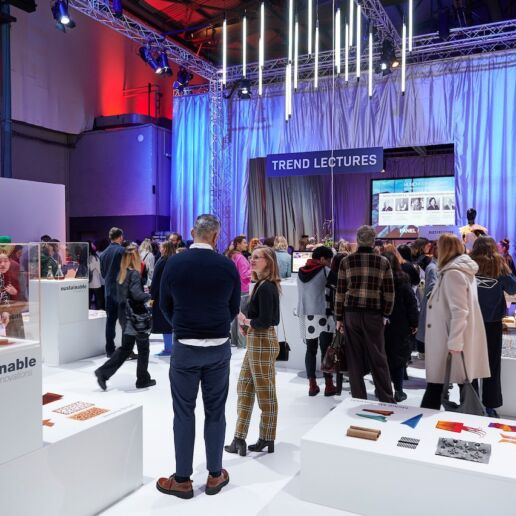
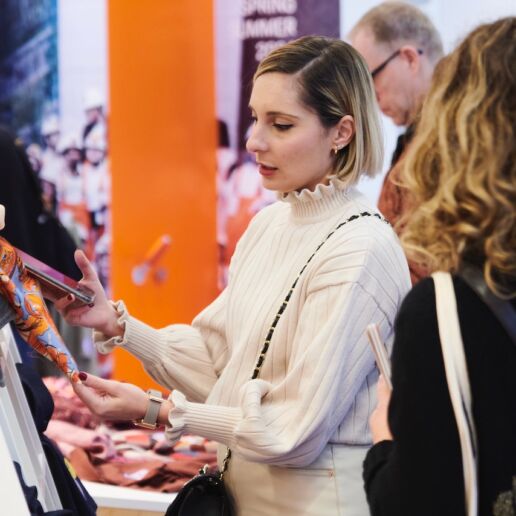
“In my point of view, the early date is a meaningful step. I am pleased about the early overview & choice of collections. I also welcome the fact that flat weave and denim suppliers are brought together at this time. The September event has to prove itself and depends on the new & further developments of the collections. We appreciate both events to date and will continue to use them in the future.”
Michael Willems, Produktmanager, ALBERTO GmbH & Co. KG
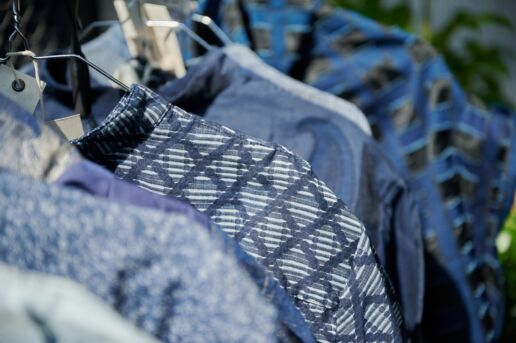
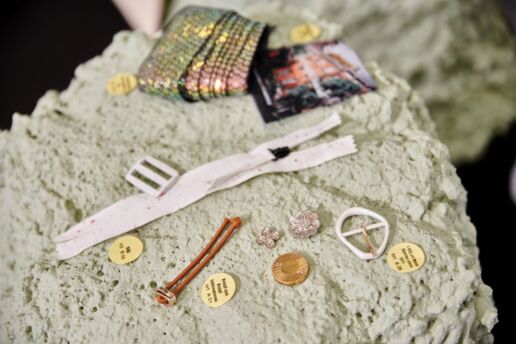
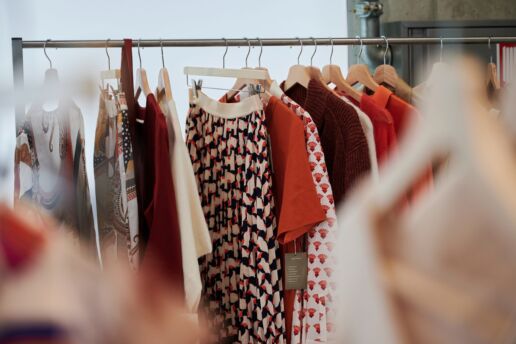
OVERVIEW OF ALL UPCOMING DATES
AUTUMN.WINTER 24/25
MUNICH FABRIC START
(18. – 20.07.2023)
BLUEZONE, KEYHOUSE, THESOURCE
(18. – 19.07.2023)
AUTUMN.WINTER 24/25
reVIEW
(13. & 14.09.2023)
SPRING.SUMMER 25
preVIEW
(28. & 29.11.2023)
SPRING.SUMMER 25
MUNICH FABRIC START | THE SOURCE Studios
(23. – 25.01.2024)
BLUEZONE | KEYHOUSE
(23. – 24.01.2024)
Discover more industry-changing innovations at our upcoming trade shows:
Fabrics Spring.Summer 24 I
In the FABRICS Area, around 600 international suppliers present their material innovations for all apparel segments. The complete product portfolio of fashionable woven and knitted fabrics made of wool, cotton, silk, blends and functional fibers is represented here. For the Spring.Summer 24 season, we present some highlights from international producers in our FABRICS blogposts:
ATHENEA
Athenea is much more than just a family textile company founded in 1976 in Alicante, Spain. Athenea has managed to keep all the production process internal, which allows them to be recognised as a vertical factory with the ability to develop qualities, print (digital as well as conventional), dye and finish. There’s no limitation in the number of colours nor the scale of the designs. They can 100% personalise the designs following their clients’ specifications, therefore creating unique and exclusive designs.
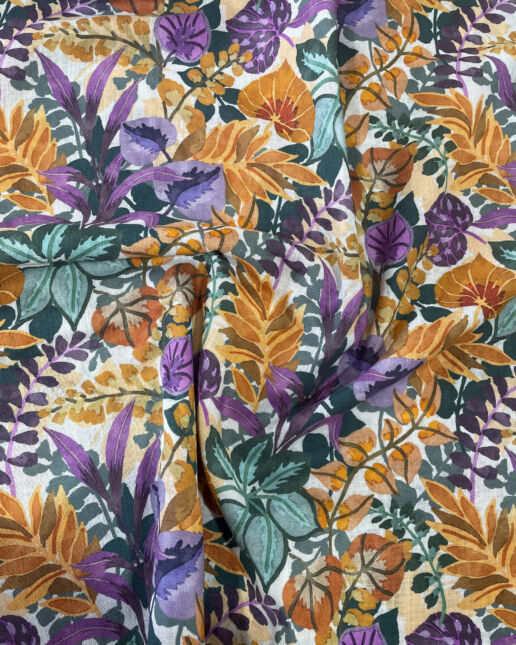
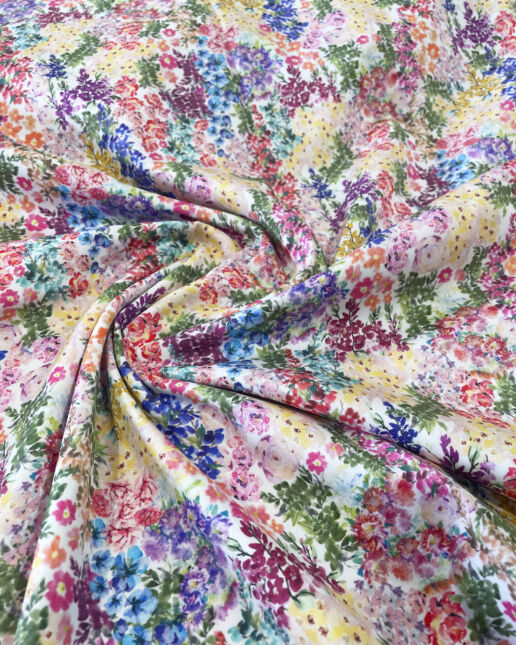
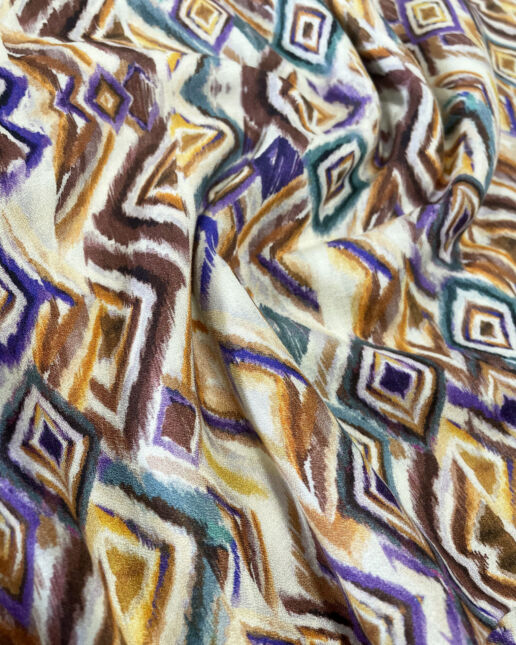
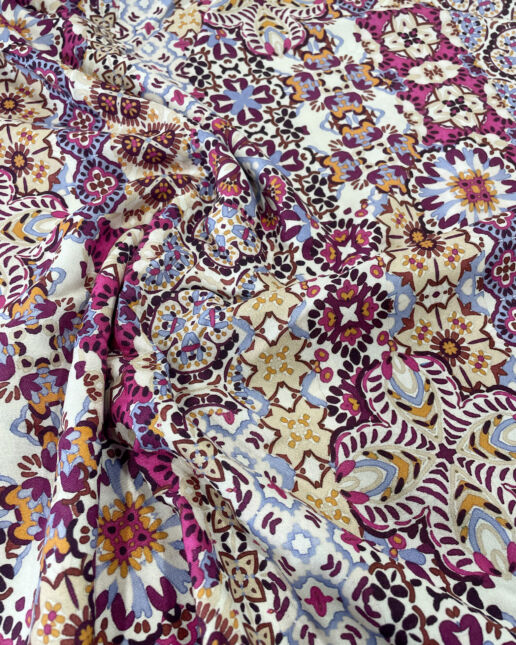
BOGAZICI ORME
Bogazici Orme is one of the industry’s leading companies which is specialized in producing / exporting jacquard knitted fabrics since 2006.
Developing new items before client request, delivery on time, invest in research and development are the principles lead us to success. They serve their passion, high quality and trust to their clients.
The collection offers recycled polyester / organic cotton and other eco-friendly materials. Furthermore a wide range of fancy yarn development is available and they are able to produce for Inditex and Join life.
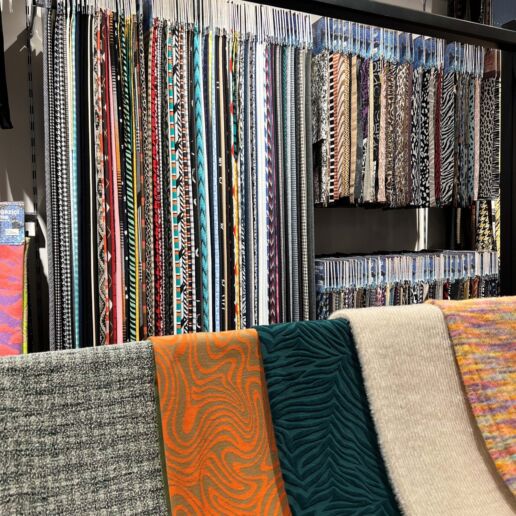
GLOBAL TEXTILE
Global Textile is one of the largest textile companies in the Republic of Uzbekistan, specializing in Yarn and Knit fabrics.
The company started operations in 2018 and is now vertically integrated in the production of textiles, from growing cotton to production of garments and apparel. The company grows its own cotton with the latest drip irrigation technology, has its own cotton processing plants, the largest spinning mills in Uzbekistan located in Tashkent and Fergana, including knitting and dyeing houses in Fergana. They have ISO, Usterized, Oeko-tex certificates, that confirm the quality, safety and environmental properties of their products.
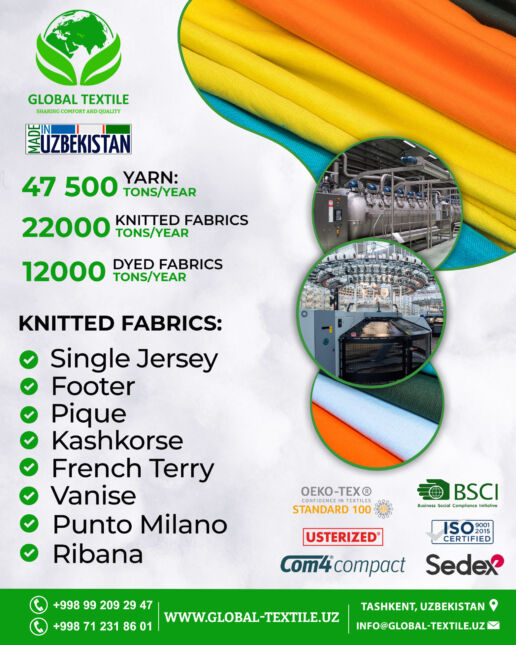
THIS MIGHT BE ALSO INTERESTING FOR YOU
Additionals Trends Spring.Summer 26 – Part 1
5. January 2025
The beauty of the Opposite Collection lies in its ability to tell a story.
KEYHOUSE NEWS – WKS
5. January 2025
WKS Sustainable Textile Solution has been the unique service provider along the entire textile supply chain for over 60 years.
TEXroad: Putting the data in circular textiles
4. January 2025
The Data Hub tackles challenges in the post-consumer value chain such as a lack of transparency in textile flows, inconsistent data shared between partners, and inefficient reporting to the public sector.
Venus In Fury of Sustainable Innovation
4. January 2025
Marking a seismic shift from traditional textile creation, Venus In Fury’s approach starts not with a sketch, but with a selection of natural materials like Dutch wool and seaweed.
KEYHOUSE NEWS – FELDE FIBRES
20. December 2024
This innovative quality offers unmatched fineness, handfeel, and appearance, unlocking new application possibilities and reviving the long-overlooked hemp plant.
LOOPER Textile Co. – A second life for unwanted garments
17. December 2024
Looper Textile Co. is a trusted partner in preparing garments for the next phase of their lifecycle. The bold ambition and strong heritage of this young company lies the understanding...
SPRING.SUMMER 26 FABRIC HIGHLIGHTS & MATERIAL NOVELTIES – PART II
16. December 2024
Beautiful and contemporary prints add fresh and vibrant touches to any garment. Wild silks are offered alongside tulles with low or zero formaldehyde.
New Fabric Collection of BLOOMATI by Carvema
15. December 2024
Innovation is at the heart of our collection. We have explored new textile technologies that bring futuristic properties to fabrics.
New Fabric Collection by Paulo de Oliveira
13. December 2024
Paulo de Oliveira is a reference in sustainable production, focusing on sustainable raw materials produced in Europe by ecological processes.
SPRING.SUMMER 26 FABRIC HIGHLIGHTS & MATERIAL NOVELTIES – PART I
12. December 2024
Fashionable woven and knitted fabrics made of wool, cotton, silk, blends and functional fibres are presented by our international suppliers..
KEYHOUSE 2023
Im atmosphärischen Industriecharme des KEYHOUSE, der Halle 5, zeigen progressive Anbieter und Global Player aus branchenübergreifenden Bereichen ihre aktuellen Neuentwicklungen und Innovationen. Auf über 1.000 Quadratmetern finden Sie richtungsweisende Smart Textiles, Future Fabrics und neue Technologien – sei es in Punkto Nachhaltigkeit, Kreislaufwirtschaft, Digitalisierung, Traceability, Technologie oder Finishing. Inszeniert als interaktiver Think Tank stehen zukunftsweisende Show Cases neben Sustainable Innovations im Spotlight.
Im KEYHOUSE befindet sich auch das Hauptvortragsforum der MUNICH FABRIC START mit exklusiven Keynotes, Podiumsdiskussionen, Trend Präsentationen, Q&A Sessions & Experten-Talks internationaler Branchen-Insider. Dies sind einige der innovativen Brands, die ihre Neuheiten während der letzten KEYHOUSE Edition im Januar 2023 präsentiert haben.
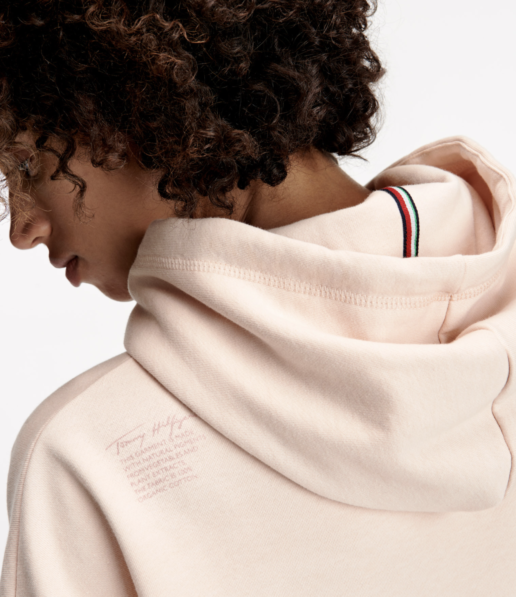
FICUS INNOVATIONS
Stellen Sie sich eine Technologie zum Färben von Textilien vor, die im Vergleich zu herkömmlichen Reaktivfärbemethoden mehr als 50 % Wasser und Energie spart. Stellen Sie sich außerdem vor, dass sie natürliche Pflanzenabfallextrakte als Farbstoffe und Hilfsstoffe für alle Vor- und Nachbehandlungs- und Färbeprozesse verwendet. Ficus Innovations hat seine einzigartige Technologie zum Färben von Naturstoffen nach 7 Jahren R&D entwickelt. Ziel ist es, natürliche Ressourcen zu schützen und wiederherzustellen, indem die Einführung nachhaltiger Stofffärbe-, Druck- und Veredelungsprozesse beschleunigt wird.
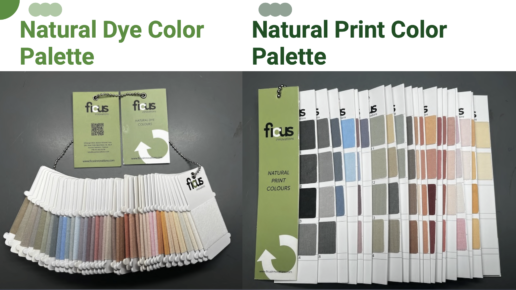
KAISER & DYSTAR
Der türkische Laundry-Anbieter Kaiser hat kürzlich das Advanced Used-Look-Konzept für modische Wash-Down-Effekte lanciert. Dieses Verfahren nutzt einzigartige und nachhaltigere Methoden, um mit einer neuen Farbstoffgruppe namens Lava Dye OZN einen Used-Look auf farbigen Kleidungsstücken zu erzielen. Das Advanced Used Look-Konzept biete eine einzigartige Lösung für die Probleme des Marktes in Bezug auf Kosten, Echtheit, Reproduzierbarkeit und Nachhaltigkeit bei used Non-Denim-Looks mit wasserlosen Methoden und der speziellen DyStar-Chemie.
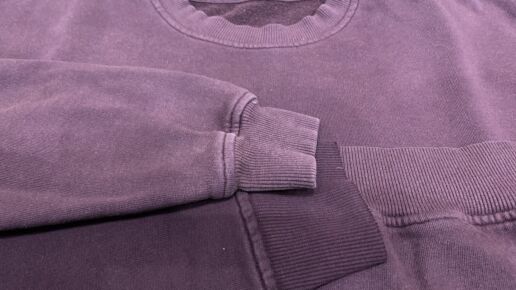
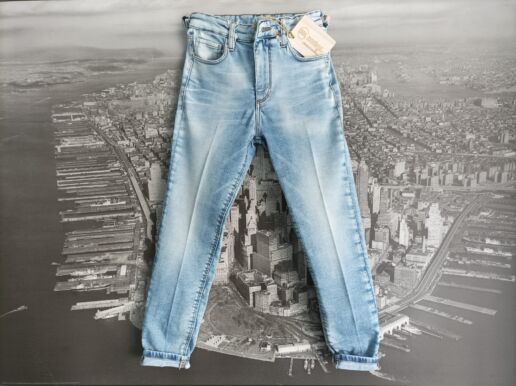
MONTEGA
Rapid Dry ist das revolutionäre Produkt von Montega, das den Trocknungsprozess verkürzt und einen Mehrwert für das fertige Kleidungsstück schafft. Dank seiner speziellen Formel ermöglicht Rapid Dry eine schnellere Verdunstung des Wassers in der Faser, Energieeinsparung während der Trocknungsphase und folglich niedrigere Kosten für den gesamten Prozess, wodurch ein saubereres Kleidungsstück mit weniger Verschleiß erzielt wird.
REACTIVE REALITY
Reactive Reality ist der führende Anbieter von Technologien zur virtuellen Anprobe und zur Erzeugung virtueller Modebilder. Die PICTOFiT-Plattform ermöglicht es Modemarken und Einzelhändlern, virtuelle Umkleidekabinen und fotorealistische Avatare nahtlos in ihre Website, App und In-Store-Lösungen zu integrieren. Für Verbraucher erstellt die Plattform fotorealistische Avatare von Käufern, die genaue Größenempfehlungen für alle Marken ermöglichen. Die Avatare können interaktiv eingekleidet werden und bieten unbegrenzte Outfit-Kombinationen und virtuelle Hintergrundszenen.
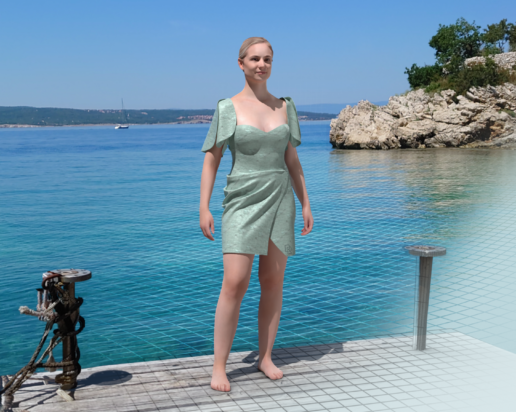
TORAY INTERNATIONAL EUROPE
Toray ist ein integrierter Chemiekonzern, der seine Geschäftstätigkeit in 29 Ländern und Regionen weltweit ausübt. Das 1926 gegründete Unternehmen ist ein weltweit führender Hersteller von fortschrittlichen Materialien und ein Lösungsanbieter mit Schwerpunkt auf Fasern, Textilien und Bekleidung.
Das könnte Sie auch interessieren
Additionals Trends Spring.Summer 26 – Part 1
5. January 2025
The beauty of the Opposite Collection lies in its ability to tell a story.
KEYHOUSE NEWS – WKS
5. January 2025
WKS Sustainable Textile Solution has been the unique service provider along the entire textile supply chain for over 60 years.
TEXroad: Putting the data in circular textiles
4. January 2025
The Data Hub tackles challenges in the post-consumer value chain such as a lack of transparency in textile flows, inconsistent data shared between partners, and inefficient reporting to the public sector.
Venus In Fury of Sustainable Innovation
4. January 2025
Marking a seismic shift from traditional textile creation, Venus In Fury’s approach starts not with a sketch, but with a selection of natural materials like Dutch wool and seaweed.
KEYHOUSE NEWS – FELDE FIBRES
20. December 2024
This innovative quality offers unmatched fineness, handfeel, and appearance, unlocking new application possibilities and reviving the long-overlooked hemp plant.
LOOPER Textile Co. – A second life for unwanted garments
17. December 2024
Looper Textile Co. is a trusted partner in preparing garments for the next phase of their lifecycle. The bold ambition and strong heritage of this young company lies the understanding...
SPRING.SUMMER 26 FABRIC HIGHLIGHTS & MATERIAL NOVELTIES – PART II
16. December 2024
Beautiful and contemporary prints add fresh and vibrant touches to any garment. Wild silks are offered alongside tulles with low or zero formaldehyde.
New Fabric Collection of BLOOMATI by Carvema
15. December 2024
Innovation is at the heart of our collection. We have explored new textile technologies that bring futuristic properties to fabrics.
New Fabric Collection by Paulo de Oliveira
13. December 2024
Paulo de Oliveira is a reference in sustainable production, focusing on sustainable raw materials produced in Europe by ecological processes.
SPRING.SUMMER 26 FABRIC HIGHLIGHTS & MATERIAL NOVELTIES – PART I
12. December 2024
Fashionable woven and knitted fabrics made of wool, cotton, silk, blends and functional fibres are presented by our international suppliers..
100 % collagen, 0 % plastic - Sustainable innovations
100 % collagen, 0 % plastic
GOLD by WINT Design Lab Robin Hoske and Felix Rasehorn
Sustainable Innovations
If you think that “GOLD” by WINT Design Lab was inspired by the shiny precious metal, you’re wrong – the design research project draws its inspiration from the outer tissue layer of the cow’s intestine. This extremely thin, elastic and tear-resistant membrane, also called gold beater’s skin, was used in the past as a separating layer when beating gold leaf.
Product designers Robin Hoske and Felix Rasehorn, founders of WINT Design Lab, together with Mimotype Technologies, saw the potential in the material to create durable and recyclable high-performance textiles free of plastic.
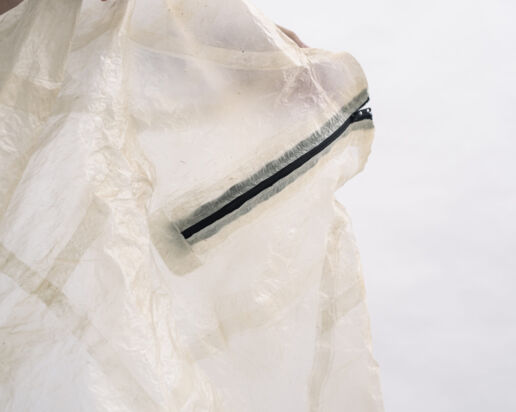
Animal skins, due to their properties, have been used by humans throughout history to create textiles with water-repellent capabilities. During a one-year research fellowship, WINT therefore investigated the aesthetic and functional design features of the skin of the goldbeater and sequenced the RNA. The goal: to synthetically replicate the material properties, develop a biopolymer and use it to make high- performance textiles. In cooperation with Mimotype
Technologies, a biotech start-up from Berlin, and funded by the BIOTEXFUTURE project of the ITA Institute of Textile Technology, the researchers succeeded in cultivating the unique material in bioreactors. The result is bio-synthetically grown collagen substrate – vegan and biodegradable – from which WINT has reated a running jacket that meets both aesthetic and functional demands.
While the global demand for synthetic textiles continues to rise and their production consumes large amounts of petrochemicals, energy and finite raw materials, a new generation of water-repellent outdoor jackets is thus born.
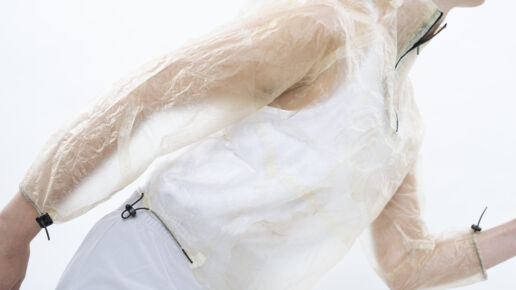
Source: GOLD
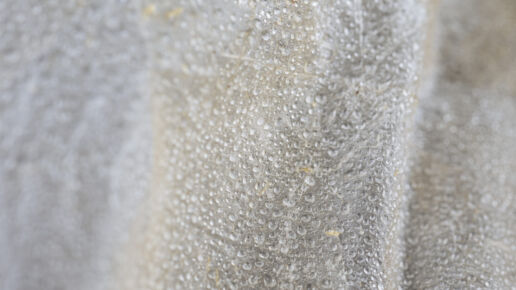
Source: GOLD
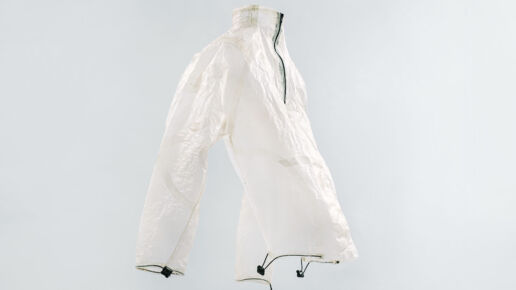
Source: GOLD
“As designers we have to shift the reasoning of our practice from convenience to impact.”
———————————————————————–
THIS MIGHT BE ALSO INTERESTING FOR YOU:
The Source Collection’s News: EAST
16. January 2025
Fashion is not only about following trends, but also about expressing your creativity and personality.
KEYHOUSE NEWS – PaperTale
15. January 2025
Whether you’re exploring product traceability, seeking to streamline compliance, or driving sustainability, PaperTale provides the tools to stay ahead in a rapidly evolving industry.
Additionals Trends Spring.Summer 26 – Part 6
15. January 2025
From timeless luxury to durable workwear solutions, each collection reflects their commitment to responsible sourcing and innovative design.


